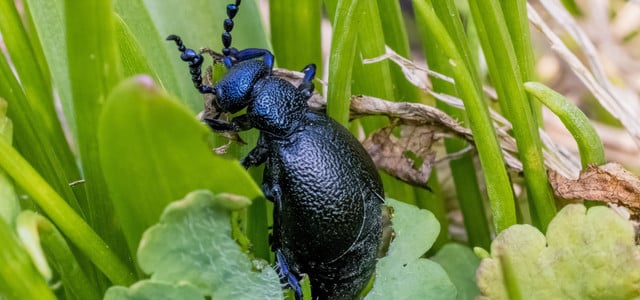
When it’s buzzing and buzzing in May, there’s a lot to discover – especially with children. Some crawling animals can be carefully picked up. Others should never be touched, for example the oil beetle.
The oil beetles, one to three centimeters long and shiny blue-black, look interesting. But the following applies to them: only look, never touch. The German Wildlife Foundation points this out urgently.
Because the violet or black-blue oil beetle, also known as the Mayworm, forms a poison on its legs that protects it from predators. In humans, it irritates the skin, causing it to become red and blistered. If an oil beetle is even swallowed, people can even die from it.
Oil beetle: What to do in case of contact?
Anyone who has come into contact with the insect should wash their hands thoroughly and then cool the affected area. If an animal is swallowed, do not induce vomiting, but call your local poison control center immediately.
May is the high season for beetles. They can be recognized by their small, cross-oval head and long abdomen. The pregnant females have a clearly swollen hind body under the short elytra.
Because the animals have a complicated development cycle that is dependent on wild bees and there are fewer and fewer suitable habitats for them, oil beetles are considered endangered.
Read more on Techzle.com:
- Study: How beekeepers harm wild bees more than they help
- Milka, Trolli & Co.: These foods contain insects
- Help bees: You can do these 10 things